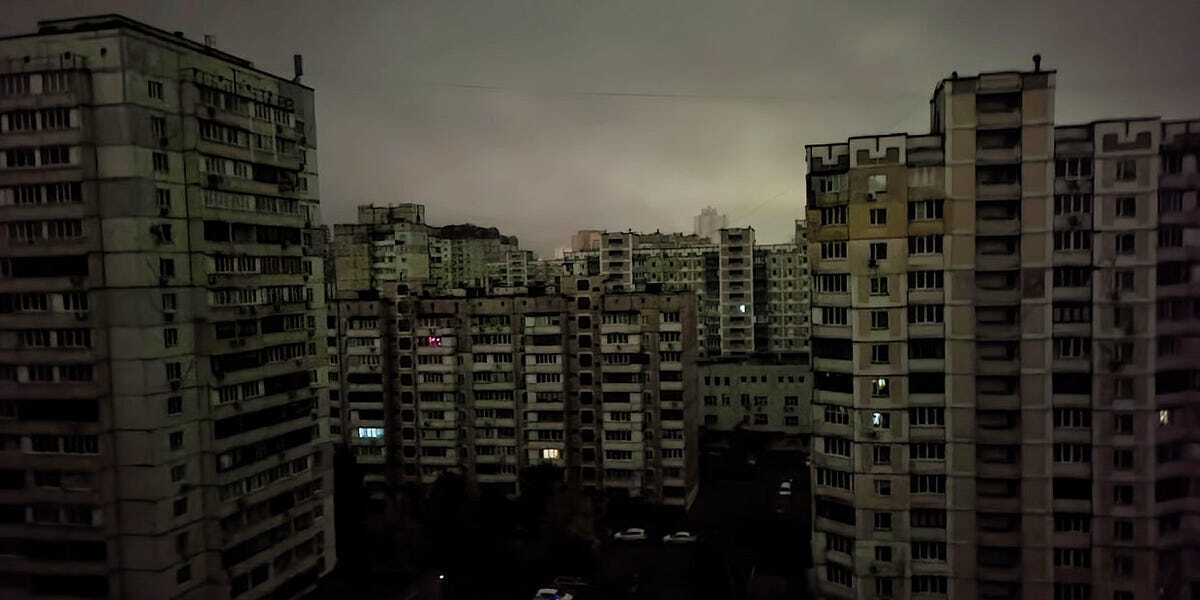A close analysis of reporting on this claim will show inconsistencies. Sometimes the ~40% figure is stated as “refineries,” rather than “refining capacity.” Sometimes 40% of Russian refineries or refining capacity is “idle,” sometimes “damaged,” or sometimes even “destroyed.” These descriptions gloss over the inherent realities of resource extraction, processing, and maintenance.
A key datapoint puts a serious hole in the triumphant headlines: around 22% of Russian oil refining capacity is sitting idle at any given time, whether due to maintenance, production limits, surplus capacity, or bottlenecks. Perfectly balancing the inputs and outputs of a complex chain of production across one of the world’s largest petroleum exporting countries isn’t possible, and so erring on the side of surplus capacity is the norm.
The complexity of estimating the true effect of the Ukrainian campaign is compounded by the method of attack – typically small barrages of long range drones with small payloads. Without massed saturation attacks, and with attrition from air defense, only small sections of industrial sites can be struck, and the operational effect of any given strike can vary widely depending on what was hit. A strike on fuel storage may bring a refinery offline and start a large fire, but the site could be brought back online relatively quickly and with minimal expense. As an example, the Volgograd refinery, one of the largest in Russia, was struck on August 13th and 14th, but fully restored operations by August 25th.
Russia’s petroleum production mixture further muddies the waters. Gasoline, and gasoline shortages, have been pointed to as a key signifier of the efficacy of Ukrainian attacks. But Russia’s gasoline production pales compared to its natural gas and crude oil production, both of which it produces at roughly ten times the rate. 95-octane gasoline is particularly vulnerable to shortages, because the the Russian petroleum industry produces roughly as much as is required for domestic consumption. In comparison, Russia produces more than double the amount of diesel and almost triple the crude oil required to meet its domestic needs. So even if gasoline shortages are as widespread and severe as is claimed (the evidence shows they’re not), it doesn’t signal an existential issue for the Russian petroleum industry or economy as a whole.
But are the effects of the drone campaign visible in Russian exports? In September, Russian crude oil exports hit a 16 month high. This may seem counterintuitive, but if the Ukrainians have disrupted refining capacity, Russian oil producers are incentivized to sell crude, which requires less processing. This shows that the Ukrainian attacks are having some effect.
A surface level reading of publicly available data suggests that the Russians are able to outpace Ukraine in standoff munition launches at strategic objects at a rate of around 3:1. All standoff munitions are not created equal, however. Russian missiles have vastly greater payloads than the average Ukrainian long range attack drone, and are more difficult to intercept.
As mentioned previously, the Russians attacked the least expensive and important transmission infrastructure first, which is the opposite of what one would do if the intention were to collapse the grid. The logical conclusion then is that the Russian strategy in the energy attrition war is to slowly escalate as a form of deterrence, taking care to avoid a true humanitarian crisis, which would redound to the benefit of the Ukrainians. Instead, the slow ratcheting up of pressure has given the Ukrainian population ample time to exit the country and prepare, reducing the impact of a crisis if one were to occur. Meanwhile the Ukrainian grid has been made more and more vulnerable over time, while the Ukrainians and their European sponsors have had to exert great expense and effort to keep it functioning.
The Russian strategy hasn’t worked, because the Ukrainians have begun to call their bluff in earnest. AFU planners are aware of Russian offensive potential, but have plowed forward with the energy war all the same. The state of the Ukrainian grid is now dire, with the Russians having the ability to impose blackouts in large cities like Kiev or Kharkov at will, or near-full blackouts of the entire country with exceptionally large attacks. Because the Ukrainians have shown no signs of being deterred, the only possible direction the situation can go is towards further escalation.
The key questions for Russian planners are: can the risk of plunging Ukraine into darkness during the winter be taken? Will the resulting catastrophe cause the conflict to spill over into something larger? Or should the Russian economy take the refinery strikes on the chin and keep marching forward as before towards a likely victory that could be a year or more away?


